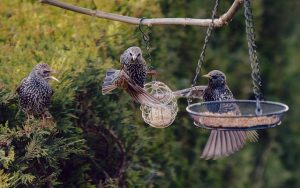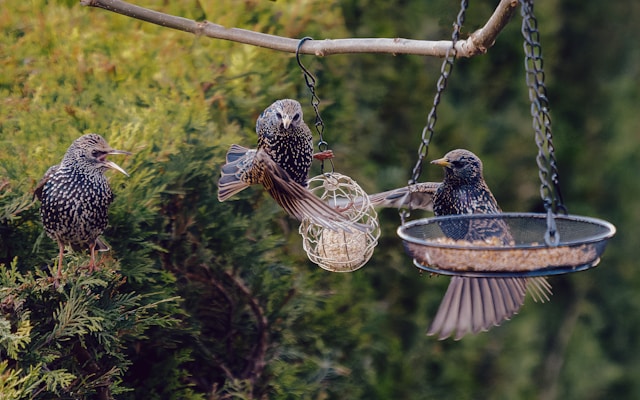If you’ve ever paused to admire a chirping visitor in your garden, you’ll know there’s something quite magical about birds. They bring life, colour, and song to even the smallest of outdoor spaces. And one of the best ways to welcome these feathered friends is with a well-placed bird feeder. Whether you’re a seasoned birdwatcher or simply looking to brighten up your morning cuppa with a view of fluttering wings, bird feeders offer something special.
A Simple Addition with Big Impact
 Bird feeders are more than decorative garden pieces. They provide a reliable food source for feeder birds, especially during cooler months when natural pickings are slim. For you, they offer a front-row seat to nature’s show – from curious sparrows to bright rosellas and cheeky lorikeets, depending on where you are.
Bird feeders are more than decorative garden pieces. They provide a reliable food source for feeder birds, especially during cooler months when natural pickings are slim. For you, they offer a front-row seat to nature’s show – from curious sparrows to bright rosellas and cheeky lorikeets, depending on where you are.
The beauty of a bird feeder lies in its simplicity. A hanging bird feeder, for example, can be popped onto a tree branch, balcony hook, or pergola and start attracting birds almost immediately. It doesn’t take up space, doesn’t need power, and yet it encourages local wildlife to make regular visits.
Choosing the Right Bird Feeder
Not all bird feeders are created equal. The best one for your garden will depend on the types of feeder birds common in your area and what kind of food you plan to offer. Here are a few popular types:
- Hanging Bird Feeders: Ideal for smaller gardens or balconies. Easy to install and often squirrel-resistant.
- Platform Feeders: These are open trays that attract a wide variety of birds, including larger ones like doves and pigeons.
- Tube Feeders: Great for small seed-eating birds such as finches and robins.
- Suet Feeders: Perfect for winter, these hold fat-based food blocks that offer extra energy.
Whatever you choose, make sure it’s easy to clean. Hygiene matters – dirty feeders can spread disease among birds, so a quick rinse with soapy water every week or so will go a long way.
What to Feed Feeder Birds
Different species prefer different snacks, so a bit of variety is best. Common feeder birds like finches, wrens, and tits enjoy sunflower seeds, nyjer seeds, and suet. If you’re in Australia, native seed mixes often attract rosellas, cockatoos, and other local species. Avoid feeding bread – it offers little nutritional value and can harm birds if given too often.
You might also consider adding a bird bath nearby – fresh water is just as important as food.
Curiosity Corner: Your Bird Feeder Questions Answered
What birds will I attract with a bird feeder?
It depends on where you live, but common feeder birds include sparrows, finches, blue tits, robins, and wrens. In Australia, you might see rainbow lorikeets, rosellas, and even kookaburras nearby.
How often should I refill my hanging bird feeder?
This depends on how many visitors you get! Start by checking it every couple of days. In cooler months, birds may visit more often, so keep an eye out.
Is it okay to feed birds all year round?
Yes, though they tend to rely more on feeders during winter when food is scarce. In spring and summer, many birds will naturally forage more, but a feeder still offers a welcome treat.
Can I make my own bird feeder?
Absolutely! Many bird lovers craft simple hanging bird feeders from recycled materials like plastic bottles or coconut shells. Just ensure the design keeps food dry and is easy to clean.
Do I need to worry about pests or other animals?
You might occasionally attract squirrels or possums, depending on your location. Choose feeders with baffles or secure placement to deter these uninvited guests.
Ready to Welcome Nature In?
Installing a bird feeder is one of the easiest and most rewarding ways to connect with wildlife. Whether it’s a simple hanging bird feeder on your balcony or a collection of feeders throughout your garden, you’re bound to enjoy the colours and songs of your new feathered neighbours. Keep it clean, keep it stocked, and your garden will become a popular pit stop for feeder birds year-round.
And who knows – with time, they might even start to recognise you too.
